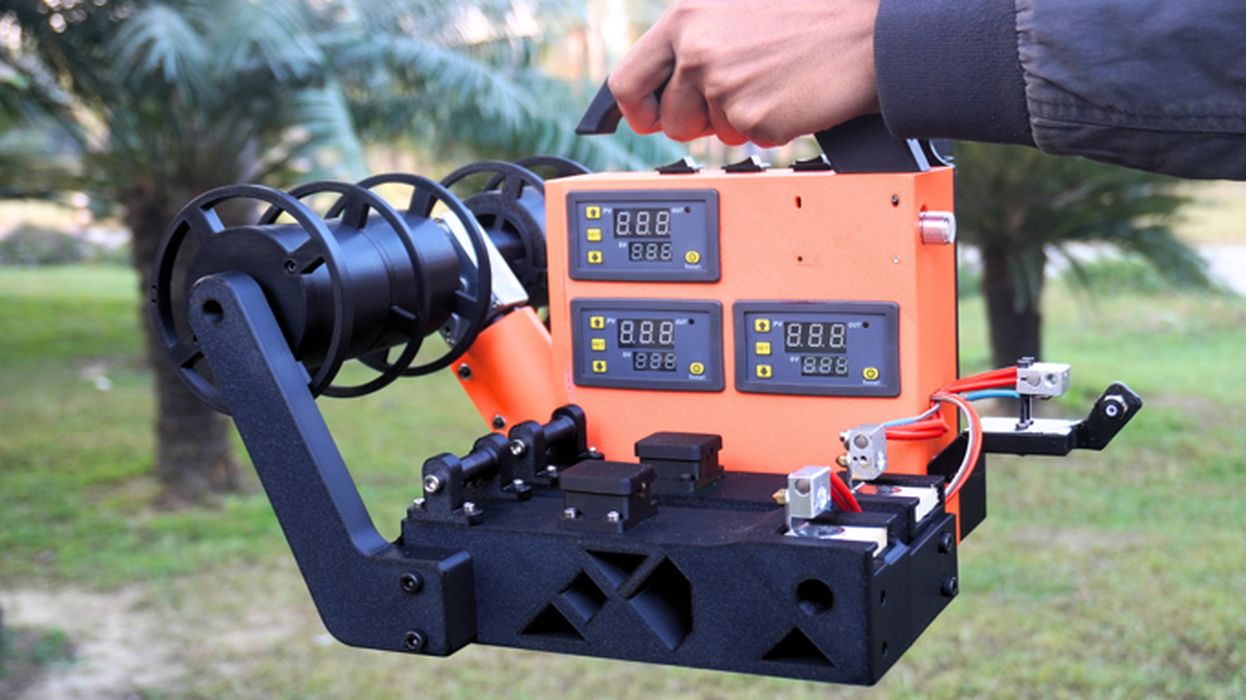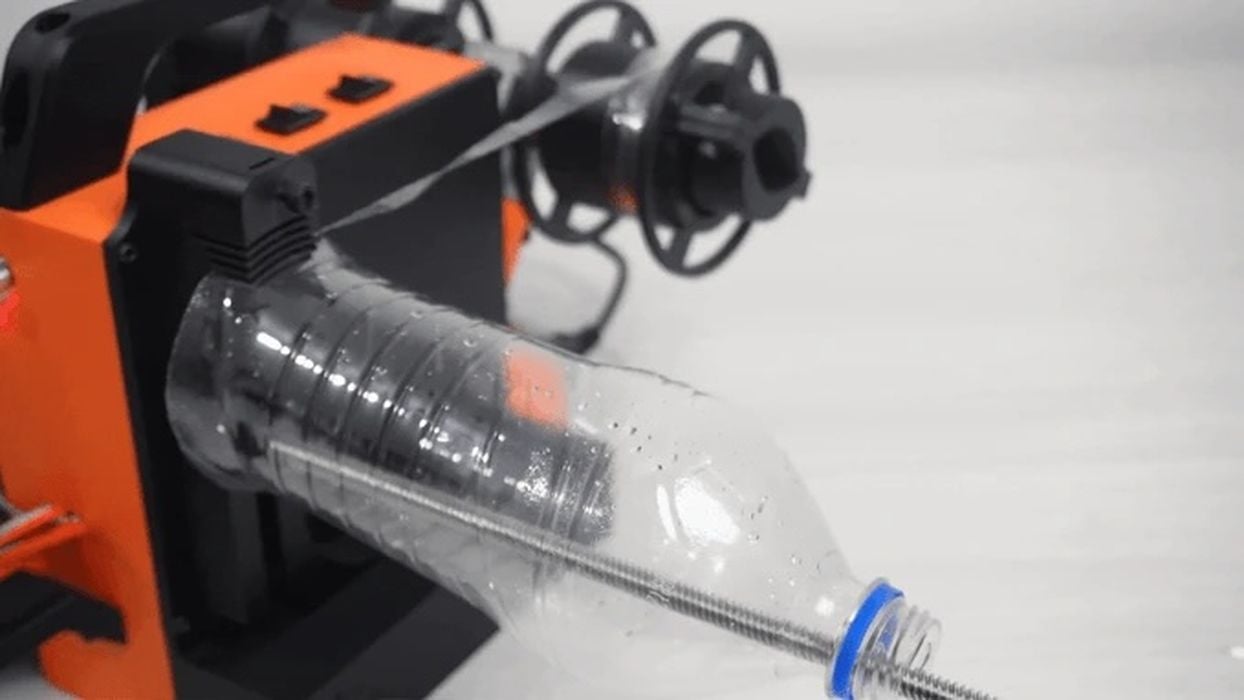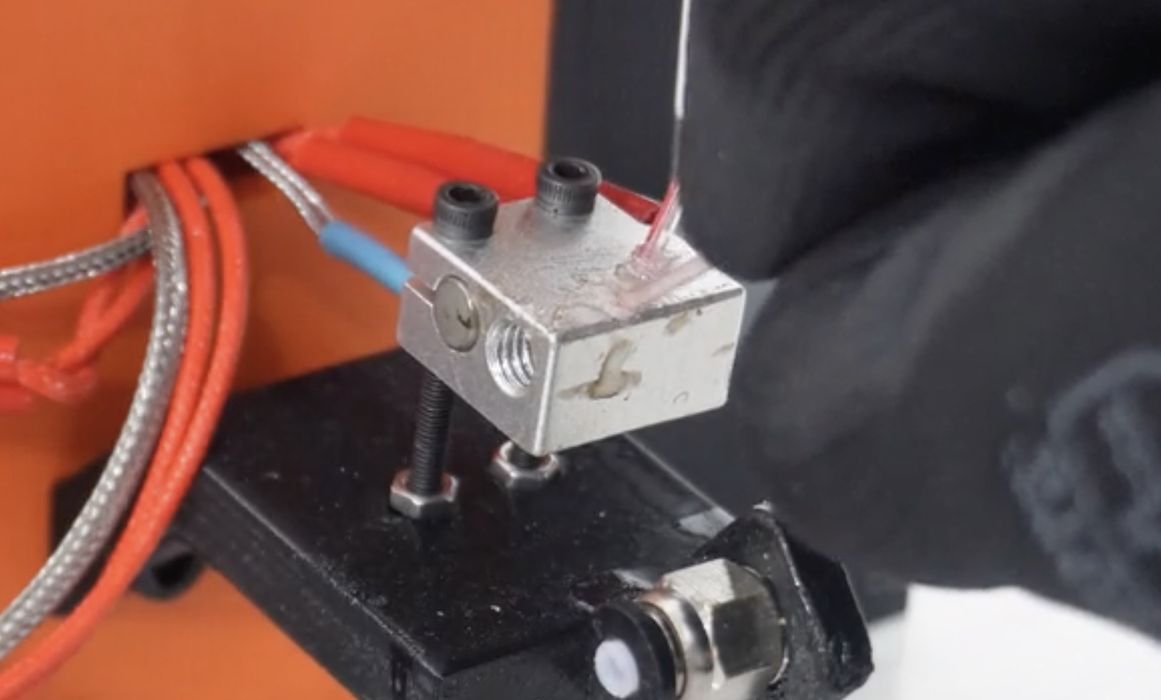
A new Kickstarter project hopes to enable home production of 3D printer filament from recyclable bottles.
You may have seen advertising for filament made from recycled materials. The sources for these materials are very often drink bottles, which are typically made from PET. If the source is always the same bottle type from the same drink manufacturer, the chemistry and characteristics of the incoming material are identical, enabling proper filament production.
But that’s an industrial process. Could this be done by normal humans at home? Creative3DP believes this is possible with their latest system, the PETFusion 2.0. It’s a system that accepts drink bottles and can transform them into 3D printer filament.
How does it work? According to their launch video, the operator “thoroughly cleans” a drink bottle and chops off the bottom. A slicer then pulls off a long strip of material from the cylindrical portion of the bottle.

This strip is then fed into a hot end, and the output is melted and remade into filament form. The end is tied to a take-up spool, which pulls the material through the hot end automatically. There are actually two hot ends and take-up spools, so you can theoretically make two spools at once.
There isn’t nearly enough material in a single drink bottle to make up a 1kg spool, so you’ll have to process several bottles to make a usable amount of filament. This is done by welding two ends together. According to their video, this is done by holding the two ends on top of the exposed heater blocks to melt them. Then you quickly jam them into the ends of a PTFE tube that hopefully fuses the ends together and forms a smooth joint.
The rewards are a bit strange for a Kickstarter. Instead of ordering the unit itself, you order the STL files and a “detailed list of non-printable components”. Basically, you’re building this yourself — and even buying all the components. This is more like an open-source project than an actual project. However, you will be charged US$39 for the STL files.
I am very skeptical about this item, mainly due to the fact that producing usable filament is extraordinarily challenging. While it may appear to be a simple process: melt and extrude; it actually requires incredible precision to produce a filament of consistent diameter and roundness.
This is doubly important with today’s high-speed, high-quality machines. These devices produce excellent-quality output not only because they are carefully engineered, but also because they are intended to use precision filament. If you use bad filament, you will get bad prints every time.
Filament production lines ensure quality by using precision measurement instruments. Basically, they have two or three laser measurement devices monitoring the output filament at all times. If the filament is too thin, they slow down the pull to make the filament thicker, and vice versa. This all happens in real time, and after some calibration, the production is set, and a very large spool is produced. That large spool is then re-spooled onto smaller 1kg spools, typically.
The problem I have with the PETFusion 2.0 is that there doesn’t seem to be any measurement mechanism on the device. In other words, there is no way this machine can produce properly usable filament.
Even worse, filament production requires some wastage at the beginning of the run during calibration as explained above. The short bottle-sized segments used in the PETFusion 2.0 mean that calibration basically happens all the time. How can you dial in the proper speed? The amount of waste material required to tune the extrusion might be a large portion of each bottle’s material.
The only explanation of how the “high quality” is achieved is mentioned here:
“The single motor, connected to the removable spool, pulls the filament through the dual hotends and directly winds it onto the spool. This dual-purpose design reduces mechanical complexity, maintains optimal tension, and ensures the filament is wound smoothly and evenly.”
I cannot see how this could work because the operator can choose a variety of slice widths on the bottles, meaning there will be differing amounts of material coming through.

The welding operation seems a bit unsafe, as it appears you have to hold the material close to very hot heater blocks with bare hands, at least in their video. This should at least be done with heat gloves, but that would reduce the dexterity required to precisely push the filament into the PTFE tube.
In any case, the weld will introduce a bulge in the filament that will negatively affect the output. Imagine a 1kg spool: it would have dozens of weld bulges throughout the filament. Printing with this filament would result in blobs all over your print.
While I am strongly for recycling, especially 3D printer waste, I can’t see how this device could be practical. It seems to require a considerable amount of manual effort (collecting, cleaning, cutting, feeding, welding, etc.). That effort is so great I can’t see very many people doing this when they could easily buy a full, proper quality 1kg spool of recycled material instead for US$20. This is especially so when operators realize the filament quality made with this device is not going to be very good.
The only desktop-level filament production system that seems to be viable these days is from 3DEVO, and it costs in the US$18,000 range.
For a good reason.
Via Kickstarter
